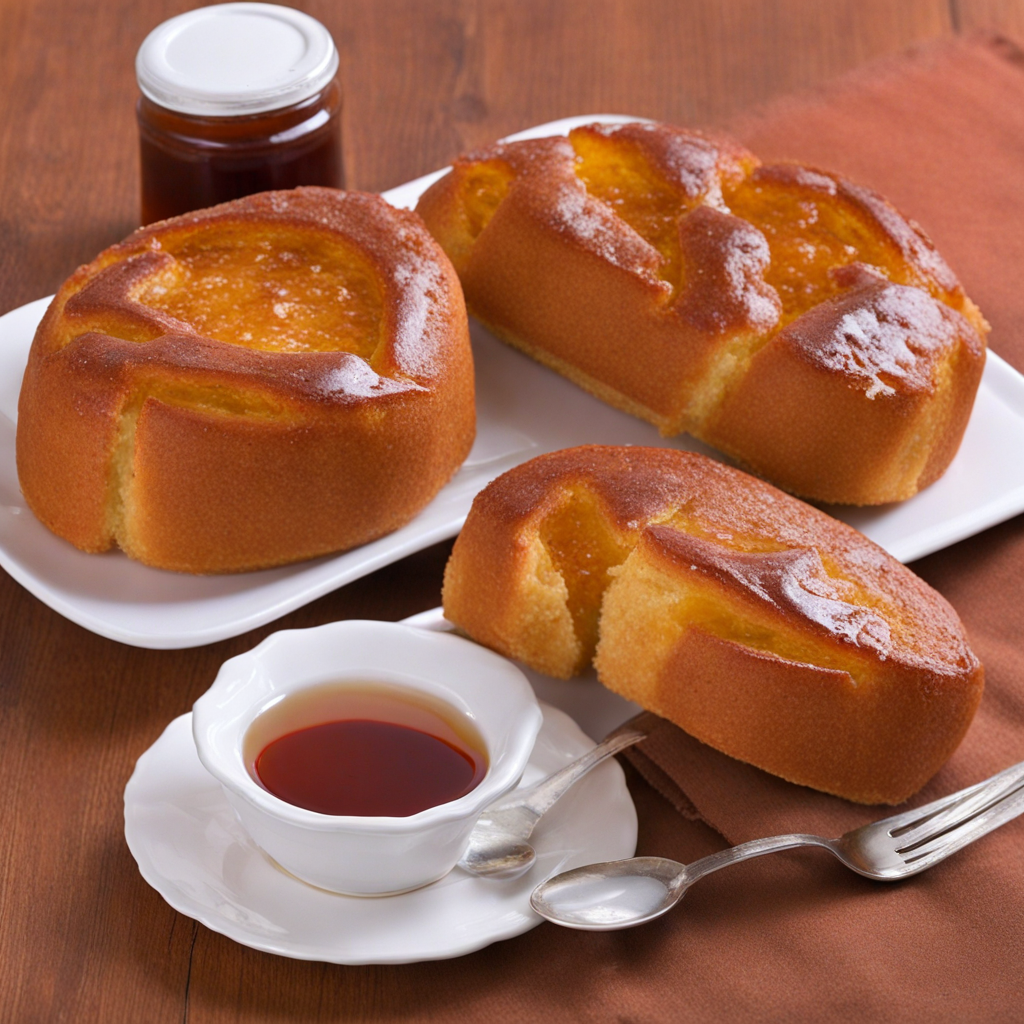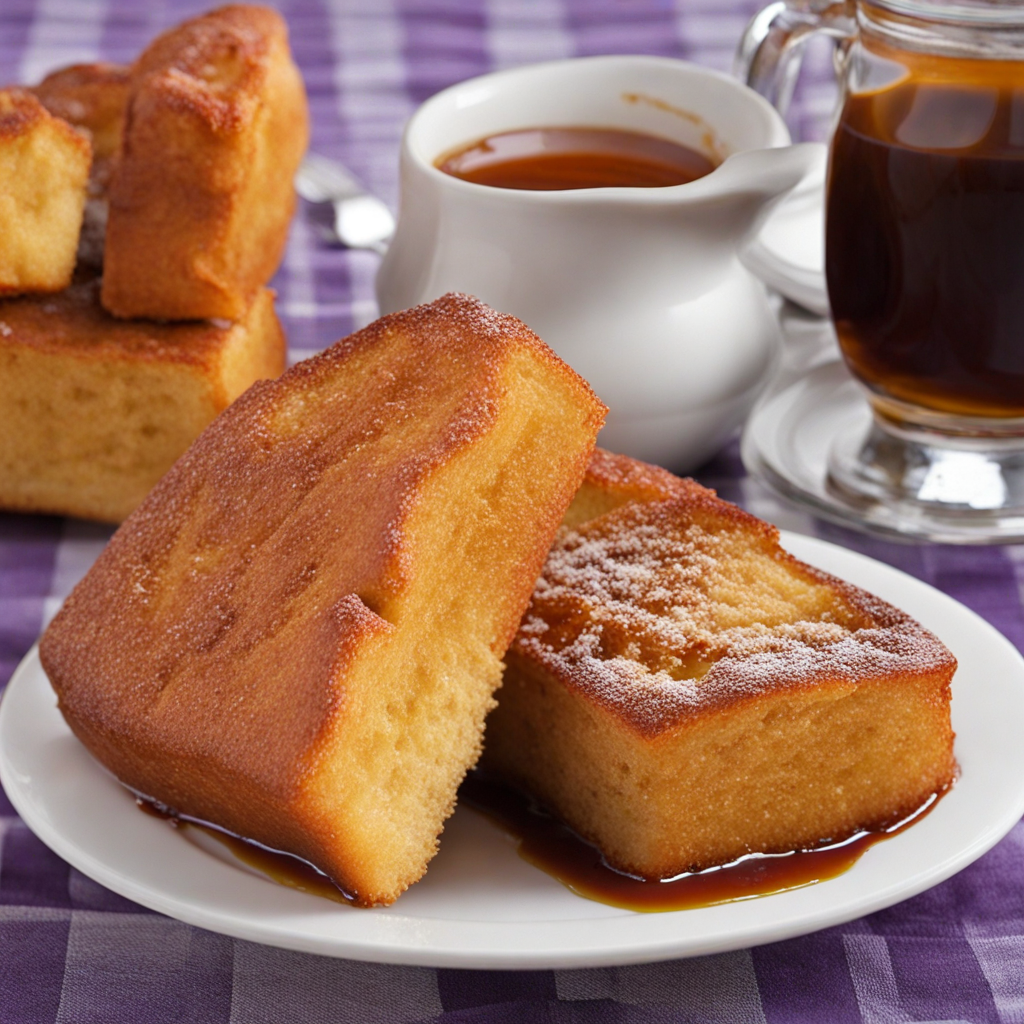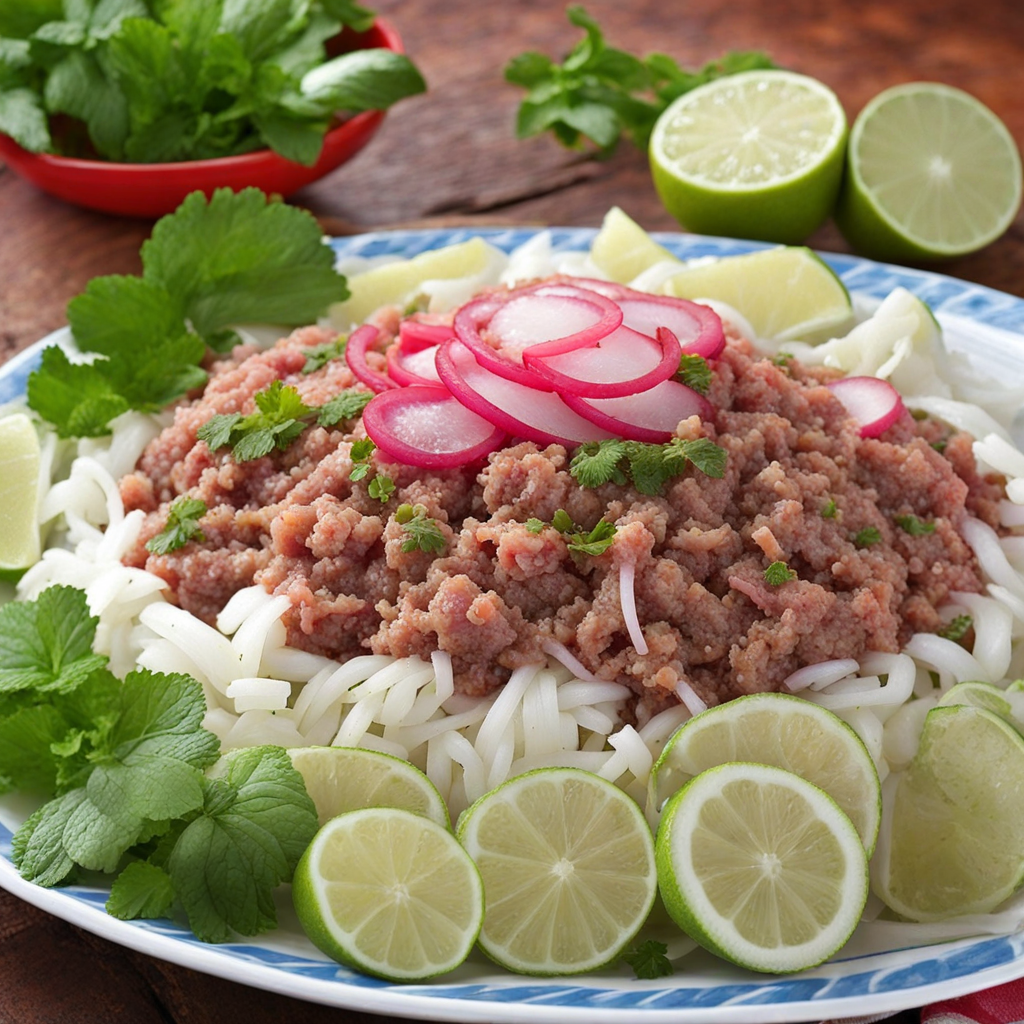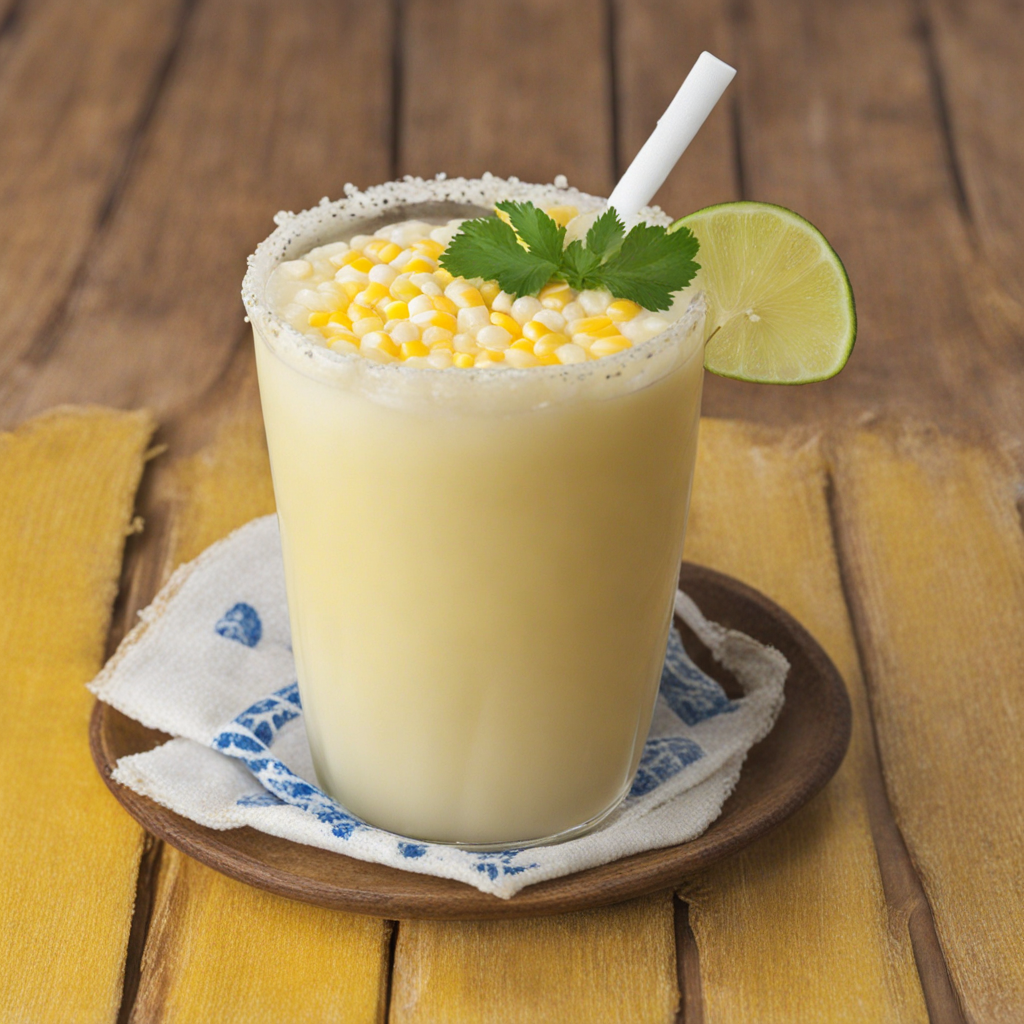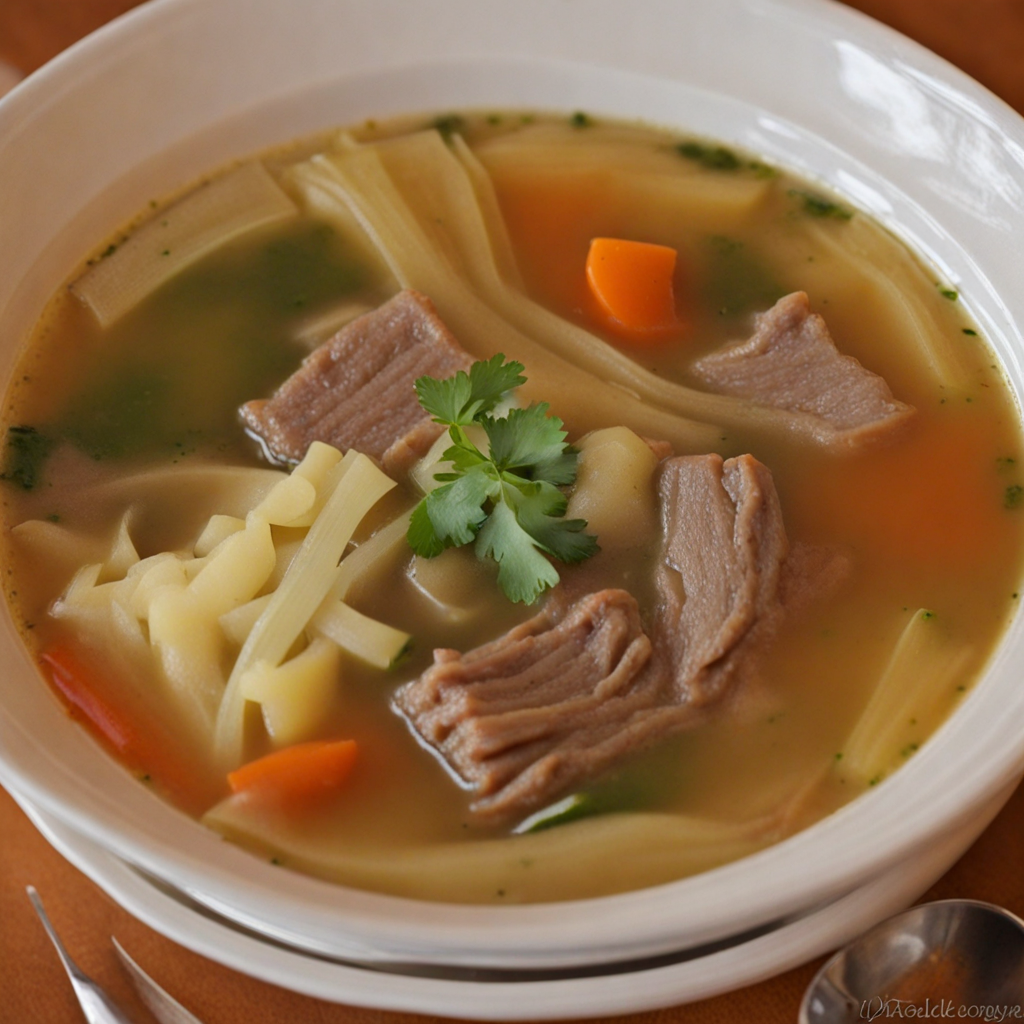Torrejas
Torrejas are a delightful traditional dish from El Salvador, often enjoyed as a sweet treat or dessert. This unique creation is made by soaking slices of bread, typically a dense and slightly stale variety, in a rich mixture of milk, eggs, and cinnamon. After soaking, the bread is then fried until golden brown, creating a crispy exterior while maintaining a soft, custardy interior. The infusion of cinnamon adds a warm, aromatic flavor that beautifully complements the sweetness of the dish. Once cooked, Torrejas are usually drizzled with a luscious syrup made from sugar, water, and sometimes a hint of vanilla or additional spices. This syrup not only enhances the sweetness but also adds a glossy finish that makes these treats visually appealing. The combination of the crunchy outside and the soft, sweet inside is a textural delight, while the syrup seeps into the bread, making every bite an indulgent experience. It’s common to serve Torrejas with a sprinkle of powdered sugar or a dusting of cinnamon for an extra touch of flavor. Torrejas can be enjoyed at any time of day, whether as a breakfast option, a snack, or a dessert after a hearty meal. They are often accompanied by a cup of coffee or a sweet beverage, making them a perfect companion for social gatherings or festive occasions. Each bite offers a taste of Salvadoran culture, encapsulating the joy of simple, comforting food that brings people together. For those looking to explore new flavors, Torrejas provide a sweet escape into the culinary heart of El Salvador.
How It Became This Dish
The History of Torrejas: A Sweet Slice of El Salvadoran Culture Torrejas, a beloved Salvadoran delicacy, is more than just a dessert; it is a symbol of cultural identity and tradition that has evolved over centuries. These sweet, eggy fritters, typically made from bread soaked in a mixture of milk, sugar, and spices, then fried to golden perfection, are often enjoyed during the Lent season and at festive gatherings. To understand Torrejas is to embark on a journey through El Salvador’s rich culinary history, revealing layers of cultural influence and significance. #### Origins: A Fusion of Influences The origin of Torrejas can be traced back to Spain, where a similar dish known as "torrijas" has been enjoyed since the 16th century. These Spanish torrijas were traditionally made during Holy Week as a way to utilize stale bread. The concept of repurposing leftover bread is a common theme in many cultures, emphasizing frugality and resourcefulness in cooking. When the Spanish colonized Central America, they brought with them not only their language and religion but also their culinary traditions. The adaptation of torrijas in El Salvador, however, reflects a unique fusion of indigenous ingredients and local customs. The native peoples of El Salvador had their culinary practices, which included the use of corn and other local produce. Over time, these indigenous elements began to merge with Spanish influences, leading to the creation of Torrejas as we know them today. #### Cultural Significance Torrejas hold a special place in Salvadoran culture, particularly during the season of Lent. Lent is a time of reflection and sacrifice in the Christian tradition, and Torrejas serve as a delicious reminder of the joy that can be found even in times of austerity. Families often prepare Torrejas together, passing down the recipe through generations, making it a cherished family tradition. In addition to their role during Lent, Torrejas are often served on special occasions, such as birthdays, weddings, and holidays, making them a staple at festive gatherings. The communal aspect of making and enjoying Torrejas fosters a sense of togetherness and celebration, strengthening family bonds and cultural ties. Torrejas are not only a treat for the taste buds but also a symbol of identity. For Salvadorans, they evoke memories of childhood and family gatherings, serving as a link to the past and a reminder of their cultural heritage. In a rapidly globalizing world, preserving such traditional foods becomes important for maintaining cultural identity. #### The Evolution of Torrejas Over Time As Torrejas have evolved, so too have the ingredients and methods of preparation. While the traditional recipe calls for stale bread, many variations have emerged. Some recipes incorporate local ingredients such as coconut milk, cinnamon, and vanilla, which add unique flavors that reflect El Salvador's diverse agricultural landscape. In modern times, Torrejas have also adapted to contemporary tastes. Some Salvadoran chefs and home cooks are experimenting with gluten-free options or incorporating fruits like bananas or mangoes to create new twists on this classic dish. This evolution highlights the dynamic nature of culinary traditions, where innovation coexists with the preservation of heritage. Moreover, Torrejas have transcended geographical boundaries, finding their way into the kitchens of Salvadoran immigrants around the world. In places like the United States, where Salvadoran communities have settled, Torrejas have become a means of cultural expression. They are often featured in local restaurants and are a popular item at community events, allowing Salvadorans to share a piece of their heritage with a broader audience. #### Preparation: A Labor of Love The preparation of Torrejas is a time-honored process that emphasizes care and attention to detail. It begins with the selection of bread, typically a type of white bread or bolillo, which is then sliced and left to dry out. The bread is soaked in a mixture of milk, sugar, eggs, and spices like cinnamon and nutmeg, allowing it to absorb the rich flavors. Once soaked, the bread slices are lightly fried until golden brown, creating a crispy exterior that contrasts beautifully with the soft, sweet interior. After frying, Torrejas are often dusted with powdered sugar or drizzled with honey or syrup, enhancing their sweetness. The aroma of fried Torrejas wafting through a kitchen evokes a sense of nostalgia and warmth, drawing family and friends together. #### Torrejas in Contemporary Cuisine Today, Torrejas continue to be celebrated not only in homes but also in restaurants throughout El Salvador and beyond. Chefs are reinterpreting this classic dish, creating modern takes that incorporate elements of fusion cuisine. Some establishments serve Torrejas as part of a larger tasting menu, showcasing the dish alongside other traditional Salvadoran foods. Social media has also played a role in the resurgence of interest in Torrejas. Platforms like Instagram and TikTok allow home cooks and chefs to share their creations, inspiring others to try their hand at making this beloved dessert. This digital sharing fosters a sense of community, as people from different backgrounds come together to appreciate and celebrate Salvadoran cuisine. #### Conclusion: More Than Just a Dessert Torrejas are much more than a delicious dessert; they are a symbol of resilience, cultural heritage, and the enduring power of family traditions. Their journey from Spanish torrijas to a cherished Salvadoran dish illustrates the complexities of food history, where influences converge and evolve over time. As El Salvador continues to face challenges, both socially and economically, Torrejas remind its people of their rich cultural past and the importance of community and family. In every bite of these sweet fritters lies a story of adaptation, celebration, and love—a testament to the enduring spirit of Salvadoran culture. Whether enjoyed during Lent or at a festive gathering, Torrejas remain a sweet reminder of the flavors, traditions, and memories that bind a nation together.
You may like
Discover local flavors from El Salvador


